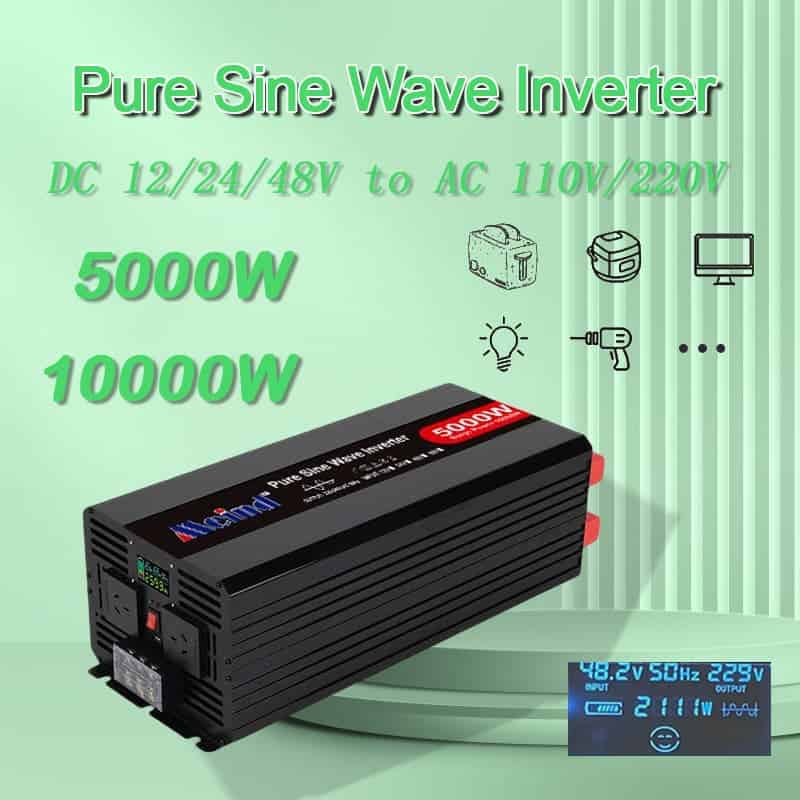chess-equality
Solar Enthusiast
- Joined
- May 21, 2022
- Messages
- 500
So here goes 
Only affects my 12v basic inverter. My 24v AIO doesn't have this issue.
The setup:
- 5kw 12v pure sine wave basic inverter, non-AIO, no built-in shore charger
- 4 x 200Ah parallel bank
- Monitored by Victron SmartShunt; batteries are good
- Used only as backup; powered off most of the time; batteries lightly cycled regularly.
- Load will mainly be an inverter-type air-conditioning unit 500w - 700w draw, and other electronics.
- Oscilloscope-meter shows waveform is sine wave, but the frequency is a different story (more below).
Works well with the aircon. But when I plug in my PC, static / RF noise are being picked up by the speakers, even with the power strip still turned off. The noise becomes all the louder when I turn the power strip on. And when this happens, the USB ports of the PC all stop functioning. It seems power has been cut off from the USB ports.
My PC is connected to an APC UPS, which I then connect to the power strip, which is connected to the inverter.
I did some tests; my ordinary meter says output freq. is a stable 60Hz, but in my oscilloscope-meter, freq. touches 60-70Hz for a few moments, then fluctuates from low to highs of up to 1-2 kHz (!). And the oscilloscope-meter also picks noise all around the inverter just by being near it, even if the leads are not connected (!).
I also tried using a 20-meter extension cord that is still coiled in its drum; the speaker noise gets reduced but doesn't go away, and still wrecks the USB ports.
Any ideas?
Only affects my 12v basic inverter. My 24v AIO doesn't have this issue.
The setup:
- 5kw 12v pure sine wave basic inverter, non-AIO, no built-in shore charger
- 4 x 200Ah parallel bank
- Monitored by Victron SmartShunt; batteries are good
- Used only as backup; powered off most of the time; batteries lightly cycled regularly.
- Load will mainly be an inverter-type air-conditioning unit 500w - 700w draw, and other electronics.
- Oscilloscope-meter shows waveform is sine wave, but the frequency is a different story (more below).
Works well with the aircon. But when I plug in my PC, static / RF noise are being picked up by the speakers, even with the power strip still turned off. The noise becomes all the louder when I turn the power strip on. And when this happens, the USB ports of the PC all stop functioning. It seems power has been cut off from the USB ports.
My PC is connected to an APC UPS, which I then connect to the power strip, which is connected to the inverter.
I did some tests; my ordinary meter says output freq. is a stable 60Hz, but in my oscilloscope-meter, freq. touches 60-70Hz for a few moments, then fluctuates from low to highs of up to 1-2 kHz (!). And the oscilloscope-meter also picks noise all around the inverter just by being near it, even if the leads are not connected (!).
I also tried using a 20-meter extension cord that is still coiled in its drum; the speaker noise gets reduced but doesn't go away, and still wrecks the USB ports.
Any ideas?
Last edited:



